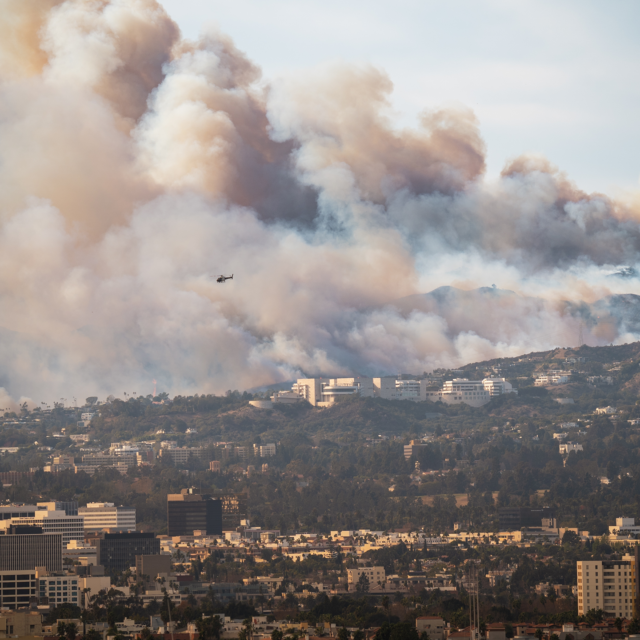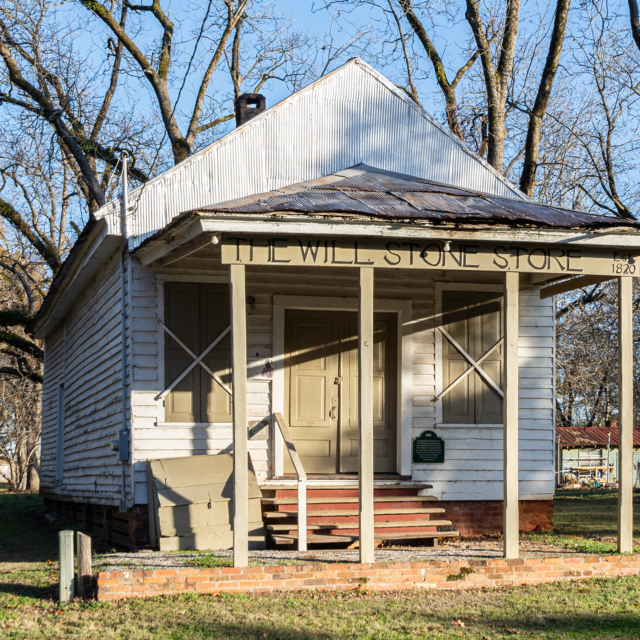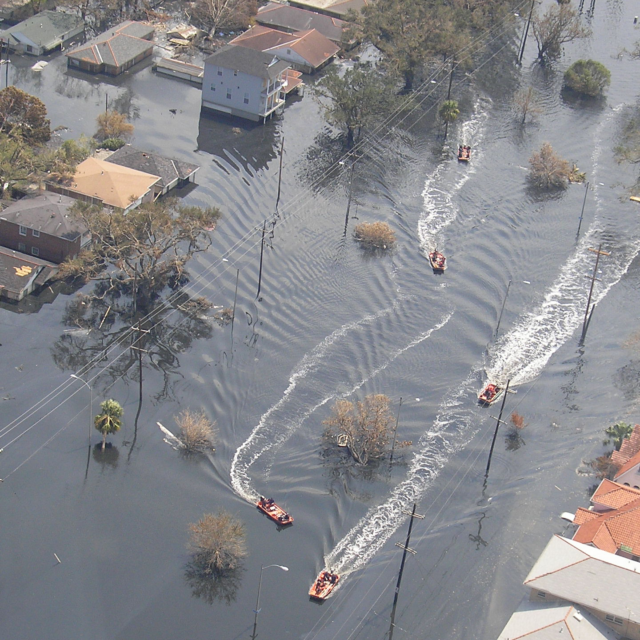Segment two of a four-part blog series by Ten Across digital journalism fellow Taylor Griffith. In this segment Taylor reflects on the historic inequities of state and federal infrastructure and their effects on community resilience, today.
In last week’s column, we looked at the potential for a new, multi-jurisdictional and federally regulated infrastructure project aimed at solving the current crisis on the Colorado River.
A water pipeline from the overflowing Mississippi Delta to the drought-stricken west was dismissed by politicians, water district leaders and water rights lawyers in discussions around preserving the Colorado River for years according to our panelists. But mandated cutbacks delivered by the Federal Bureau of Reclamation in 2021 and 2022 made apparent that state-level conservation efforts have not been enough to keep the river stable among rising annual temperatures and overuse.
In the case of the Colorado, national intervention was necessary to stall a catastrophic and potentially irreversible situation for the west’s largest water supply, and many expect a national plan will be necessary to keep the river stable long term.
While federal intervention is not always popular amongst state and municipal leaders, it could become the default line of defense against climate change, should certain communities continue to exhibit either a lack of urgency or resources, or both, in response to predictable natural disasters.
Some involved in the Colorado negotiations have rejoiced the intervention of the Bureau and Upper Colorado River Commission and its ability to enforce conservation among disparate groups in an effective and efficient manner, without suffering much political backlash among their constituents — something a local or state leader would likely not experience.
A brief history of national infrastructure and policy
As Robert Yaro, President of the North Atlantic Rail Alliance, Inc., explained in our recent Ten Across Houston Summit panel: “Thinking at the Scale of the Future”, the need for national infrastructure projects in periods of crisis has existed since the Civil War, yet there has been a significant lack of action on this front since the designation of the interstate highway system in 1956.
The National System of Interstate and Defense Highways was approved as a national defense project as the country entered a Cold War with Russia and vehicle-related deaths surged. The project planners “argued convincingly that the nation’s economy was being constrained by the absence of capacity in the transportation system,” said Yaro. “In the end, it wasn’t missile throw power that won the Cold War; it was GDP. We had a five-fold in real dollars; five-fold increase in GDP over the fifty years after the passage of the Interstate Highway Act…”
Concerned that the U.S. appears to be on a path toward a Cold War revival with Russia and China and that no state is untouched by the climate crisis in today’s age, Yaro says now is the time for Congress and the president to take on another ambitious federal improvement project.
“What does it take to kickstart the body politic to provide the kind of leadership that’s needed?” said Yaro. “They’ve got to fasten their seatbelts, because the change is coming and we’re either going to get ahead of the curve on it or we’re going to get run over by it.”
However, with projects like the interstate highway system or Roosevelt’s New Deal, there lies a troubling underbelly of indirect or deliberate harms being inflicted upon our most vulnerable communities in the wake of national policy or infrastructure innovation.
Yaro was joined by Dr. Robert Bullard, as well as Allie Kelly, executive director of The Ray, in this panel discussion.
Commonly referred to as the ‘father’ of the environmental justice movement, Bullard has written several notable publications on the historic injustices of state and federal infrastructure projects since the early 1980s.
Bullard’s, Highway Robbery, peels back a slate of injustices tied to the interstate highway system, including the nation’s choice to curve certain sections of the system around affluent neighborhoods, while simultaneously ripping through lower-income or minority communities.
“From the perspective of infrastructure; there’s built infrastructure and there’s social infrastructure,” said Bullard, “and for a long time in American history, those two concepts have not converged. We build things and we provide opportunities to access those things. But we don’t provide access to everybody.”
In many ways, the New Deal deliberately primed our nation for this selective planning of the highway system and the unequal climate crisis we now observe in our various communities.
While the Better Housing Program met its objective of supporting the emerging middle class by creating a ramp to homeownership and generational wealth accumulation; overtly biased city coding practices known as ‘redlining’ entirely cut Black and minority communities out of the deal. This process led to a lasting reorganization of the nation by race and class, leaving certain communities with little to no financial or political power to fend off the next century of city zoning and operational injustices.
“That footprint of redlining 100 years ago is showing up,” said Bullard, “in terms of which communities are more likely to flood; which communities are more likely to have more pollution; which communities are more likely to be hotter because of heat islands and no green canopy; which communities are more likely to suffer from elevated COVID deaths.”
Inequities intensify alongside the climate crisis
Lake Charles, Louisiana, is a city of just over 80,000 people with a history of “deep-seated inequity,” said Lauren Rosenthal, host of season two of In Deep and a 10X panelist. Between 2020 and 2021, it was the site of four unforgiving natural disasters in a row.
It began in August. Within the span of six weeks, back-to-back Category 4 hurricanes Laura and Delta, displaced thousands with little to no financial assistance or way to return due to faulty insurance or federal emergency aid policies.
Strain on the community continued when a bizarre winter storm arrived in mid-February. Temperatures dropped to 16 degrees, collapsing the Texas energy grid, and covering Lake Charles in sleet ¾ of an inch thick.
But it wouldn’t be over yet. A 15-inch deluge in the span of just six hours in May submerged the community just as the lengthy recovery efforts had begun.
Rosenthal was following the relentless barrage of weather events in Lake Charles as reporter at NPR, but noticed the headlines were often lost among coverage of the presidential race or COVID-19 pandemic. Afraid the significance of this crisis would be buried; she boarded a plane to the Gulf Coast community intent on documenting the recovery efforts in this five-part audio series.
When she arrived, Rosenthal said, “it felt like something had shifted and the deal that people were used to, you know, when something really goes wrong — ‘FEMA will have my back, my insurance company will have my back’ — that was not the case at all.”
Instead, much of the recovery efforts were left up to individual people like Roishetta Sibley Ozane, a single mother of six who founded the nonprofit, The Vessel Project in the midst of a devastating hurricane season and global pandemic.
The goal of this mutual aid organization is to shelter others from having to deal with the nightmarish economic and logistic obstacles Ozane faced when the first hurricane hit by providing immediate financial assistance through community donations or advice for filing an appeal with the Federal Emergency Management Agency.
Ozane was bedridden with COVID when Hurricane Laura was on path to Lake Charles. Unable to stay with family or afford a hotel, she and her children were nearly houseless before the storm’s landfall. By sheer luck, a generous donation from a member of their church kept them sheltered.
After this experience, “I thought; ‘why doesn’t the government work like this? Why aren’t we just meeting people’s needs immediately and efficiently?’” said Ozane. “At that moment in my life, I was like ‘it is so hard to get assistance. I’m a single mom of six, we’re basically living in my van. I’m having to figure out how to pay for a hotel every day. FEMA is not helping quickly enough. There’s so much red tape. They want you to produce a birth certificate that was in a home that’s completely destroyed.”
As Ozane dedicated herself to Lake Charles’ recovery, she came to understand that the intensifying natural disasters and federal response inequities her community experienced throughout the 2020 hurricane season have compounded over several decades of unjust zoning, policy, and infrastructure project approvals.
The siting of oil and gas industries along the Gulf Coast has directly contributed to coastal erosion and warmer oceans, leading to stronger hurricanes and removal of natural community barriers from its path of destruction.
And when communities within this direct path are seeking assistance, they’ll find the FEMA appeals’ process is “totally stacked against people of color; people who don’t speak English as a first language,” Rosenthal said on the Houston panel. “If you are white or wealthy, you are way more likely to succeed in getting FEMA to reverse its decision and help you.”
A path forward
As we reflect on stories like those that came out of Lake Charles, it is a harsh reminder that our systems are largely unprepared for the dramatic demographic, climatic and geographic shifts our nation is predicted to undergo in the coming century. But there are still countless grassroots leaders and advocates working to steer us away from humanitarian disaster.
Next time, we’ll look at how those on the frontlines of this issue are communicating with their audience or constituents in a way that inspires change, rather than fear.
About Taylor
Taylor Griffith was born and raised in Chandler, a city just outside of Phoenix, Arizona. As a proud citizen of this beautiful, diverse, and sometimes relentlessly hot state; issues related to water, equity, and climate change are influential to her work as the current digital journalism fellow at Ten Across and previous bylines in The Coolidge Examiner.




